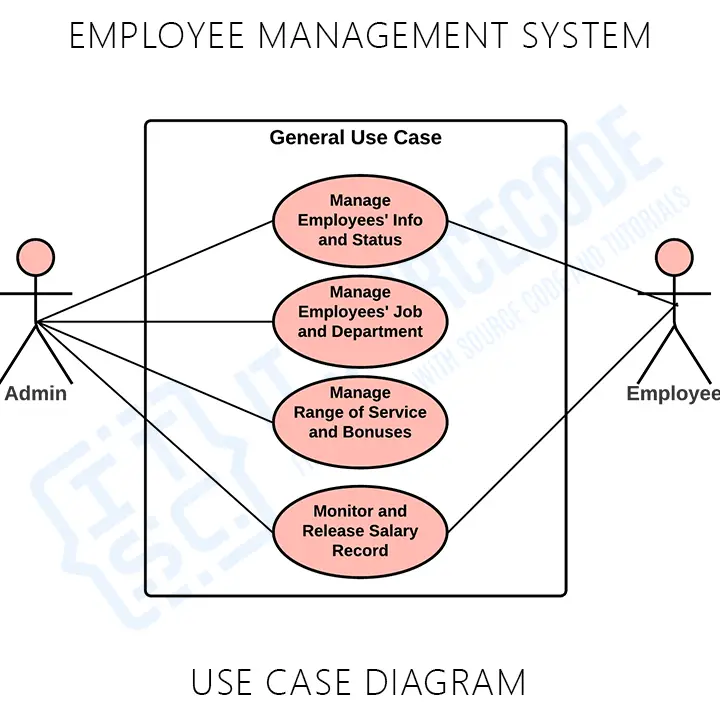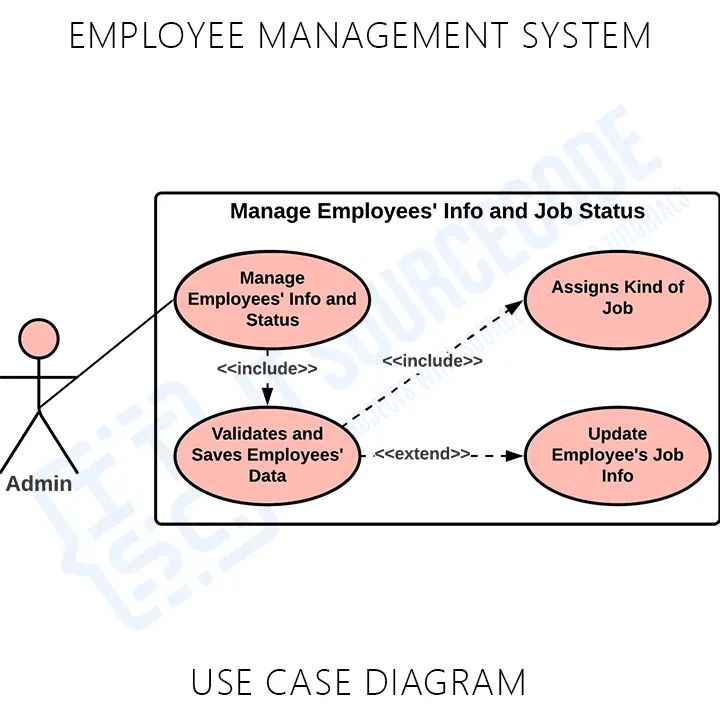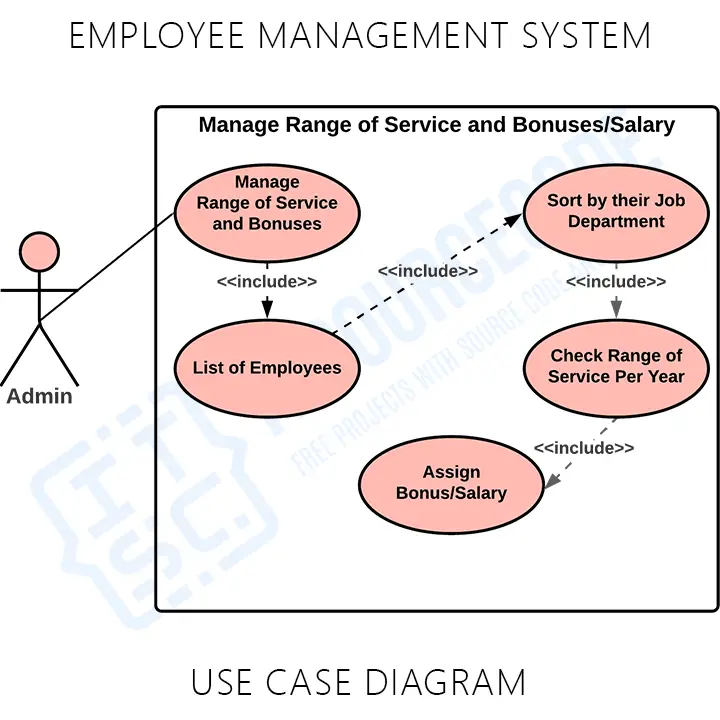The UML use case diagram for employee management system is used to show the processes involved when users invoke the software. It depicts the structure of the system behavior.
Additionally, the diagram consists of processes (use cases) and users or “actors”. It uses defined symbols to describe the overall flow of the system.
Project Overview
| Name: | Employee Management System Use Case Diagram in UML |
| Users: | Company Admin, Employers, and Employees. |
| Tools Used: | Any Diagram tools that provide use case diagram symbols. |
| Designer: | ITSourceCode.com |
What is a Use Case Diagram?
The use case diagram shows the sample behavior of the employee management system. It includes the project functions using use cases, actors, and their connections.
Moreover, the diagram assists you to define and organize project needs. This also provides a clear picture of the user and system relationships. Therefore, this diagram depicts the complex functions of a system including how the user reacts to it.
Importance of UML Use Case Diagram
Helping the developers and businesses with system management is one of the importance of the UML use case diagram. It includes the procedures from the viewpoint of users.
Furthermore, the diagram is the analysis method used to identify, clarify, and manage project needs. This diagram works best with other UML Diagrams for Employee Management System. Other UML diagrams include activity, class, sequence, deployment, and component diagrams.
Employee Management System Project Use Case Diagram (Explanation)
The designed employee management system use case diagram has two main illustrations. These illustrations describe the system’s general processes and specific processes using include and extend.
Employee Management System General Use Case Diagram
The general use case diagram for employee management system shows the general functions that the system could do. It is based on the transactions needed for managing employees.

The general use case is the most generic application of a use case diagram.
Use Case Diagram for Employee Management System using Include and Extend
The use case diagram using include and extend is used to elaborate the proceeding diagrams. The terms include and extend in the use case diagram are known as indicators.
Monitor and Manage Employees’ Information and Status
This is where the admin of the system could manage and monitor their employee’s information and status. In this process, they were able to assign the field of work of their employees and their workload.

As you can see the employee’s information should be encoded into the system. The system then will monitor its details to validate them and then saves the data.
Manage Job Department and Performance
Its process includes the assigning of job departments to the employee, monitoring what type of work they would be doing, and their salary rate. The employee must know his/her function as part of the company or establishment.

Range of Service and Bonuses Management
This is the process where the admin manages incentives and bonuses for employees. The information was based on the performance of the employees and their information. The system also saves important employee information and calculates fair salaries for them.

Downloadable Pdf File
How to draw a Use Case Diagram?
Time needed: 2 minutes
Here’s the complete guide on how to draw a use case diagram for employee management system.
- Step 1: Familiarize Use Case Diagram Symbols
For beginners in the field of designing the diagram, you need first to familiarize the symbols to be used.
- Step 2: Determine the targeted users
The next step is to determine your targeted users. They will be the ones to use your project.
You may ask the users about the typical activities done in employee management. - Step 3: Analyze the use cases included
The gathered information from the users needs to be evaluated to know the general use cases.
From the general use cases, you will see the sub-cases that are included. But, only the useful processes and circumstances related to the employee management system. - Step 4: Plot the Use Case Diagram
To plot the diagram you will need the users, use cases, container (scope), and their indicators (association). You will base the flow of use cases on the evaluated information from the users.
You need to place first the users involved.
Then place the figured use cases included in doing the process.
After that, you will trace the association of the use cases to know the interactions between the user/s and the system.
Finally, put the container in the plotted diagram to separate the objects’ (users and system) scope.
Conclusion:
One of the methods that contribute to the employee management system development is the UML use case diagram. It helps developers know the possible inputs that the project should process and perform.
Furthermore, you will find out the needed processes and connect them to the other UML Diagrams. The diagram is also applicable in modeling the software’s use cases (processes). It also captures the system’s flow from one process to the next.
Related Articles:
- Employee Management UML Diagrams
- Employee Management Project Use Case Diagram
- Use Case Diagram for Payroll Management
- Use Case Diagram for Employee Attendance Management
- Activity Diagram for Employee Management
- Component Diagram for Employee Management
- Employee Management Sequence Diagram
- ER Diagram for Employee Management System
Inquiries
If you have concerns about the Use Case Diagram for Employee Management System, just leave us your comments below.

